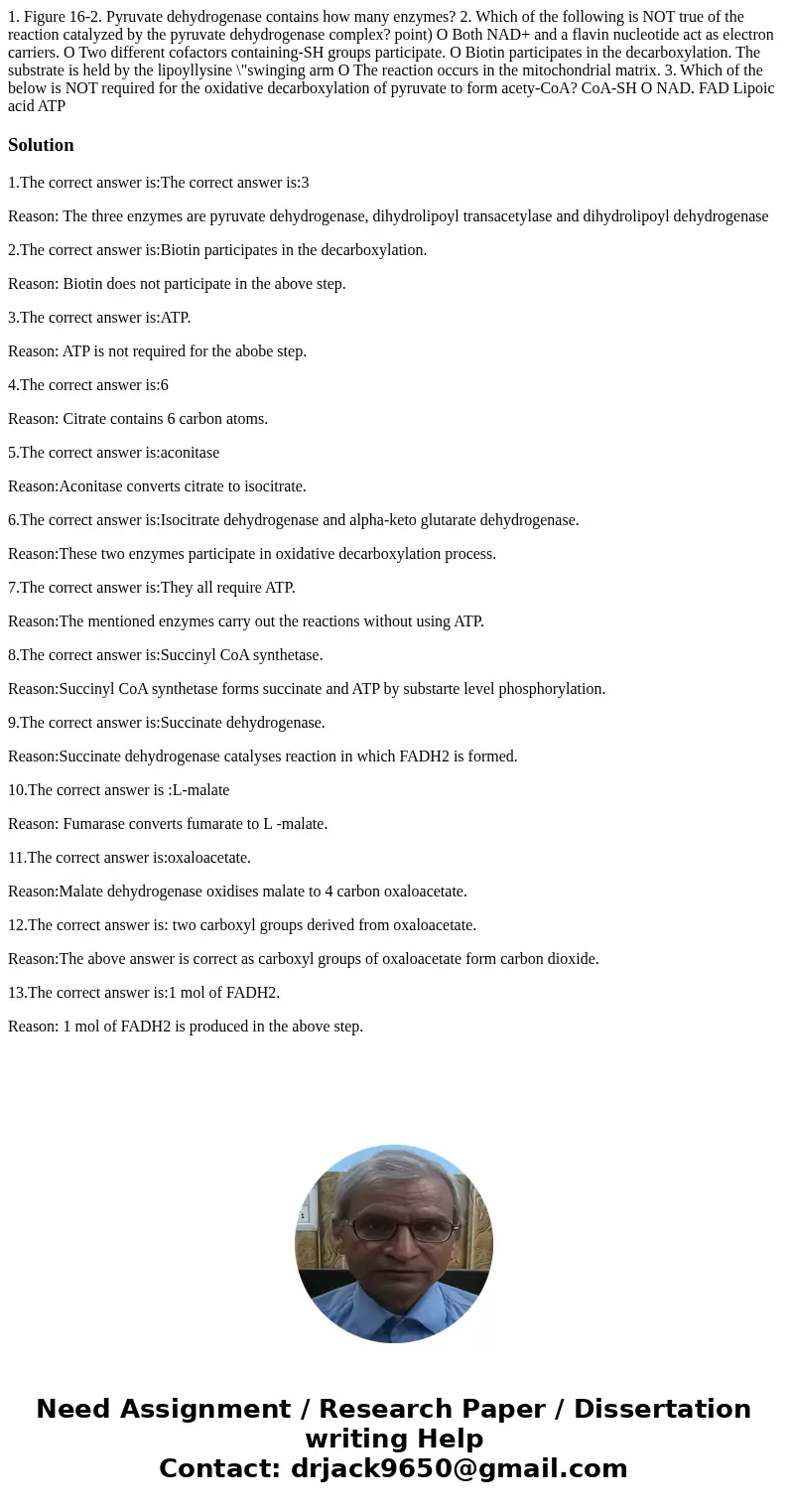1 Figure 162 Pyruvate dehydrogenase contains how many enzyme
Solution
1.The correct answer is:The correct answer is:3
Reason: The three enzymes are pyruvate dehydrogenase, dihydrolipoyl transacetylase and dihydrolipoyl dehydrogenase
2.The correct answer is:Biotin participates in the decarboxylation.
Reason: Biotin does not participate in the above step.
3.The correct answer is:ATP.
Reason: ATP is not required for the abobe step.
4.The correct answer is:6
Reason: Citrate contains 6 carbon atoms.
5.The correct answer is:aconitase
Reason:Aconitase converts citrate to isocitrate.
6.The correct answer is:Isocitrate dehydrogenase and alpha-keto glutarate dehydrogenase.
Reason:These two enzymes participate in oxidative decarboxylation process.
7.The correct answer is:They all require ATP.
Reason:The mentioned enzymes carry out the reactions without using ATP.
8.The correct answer is:Succinyl CoA synthetase.
Reason:Succinyl CoA synthetase forms succinate and ATP by substarte level phosphorylation.
9.The correct answer is:Succinate dehydrogenase.
Reason:Succinate dehydrogenase catalyses reaction in which FADH2 is formed.
10.The correct answer is :L-malate
Reason: Fumarase converts fumarate to L -malate.
11.The correct answer is:oxaloacetate.
Reason:Malate dehydrogenase oxidises malate to 4 carbon oxaloacetate.
12.The correct answer is: two carboxyl groups derived from oxaloacetate.
Reason:The above answer is correct as carboxyl groups of oxaloacetate form carbon dioxide.
13.The correct answer is:1 mol of FADH2.
Reason: 1 mol of FADH2 is produced in the above step.

 Homework Sourse
Homework Sourse